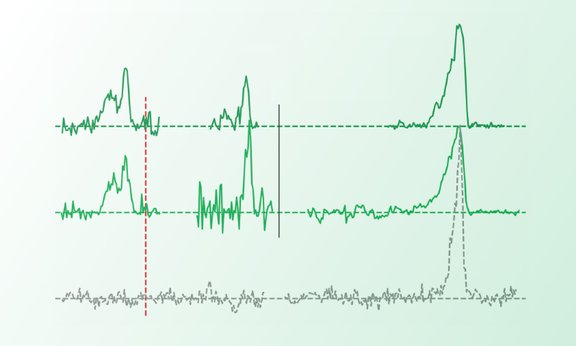The team around physicist Roland Wester have long planned on studying the bonding mechanism between hydrogen anions, i.e., negative ions, and hydrogen molecules. However, working with hydrogen anions still presents some experimental challenges. One way around this is to find at a different system, which behaves analogously but is easier to handle experimentally. “These complexes are only weakly bound”, says Roland Wester, “they are physical bonds, rather than chemical bonds”. One such analogue is the negative Chlorine ion, which forms a similar bond with molecular hydrogen as the hydrogen anion.
The team of physicists, together with colleagues from Paris, Bordeaux, Cologne and Nijmegen, are now able to describe this Chlorine-Hydrogen complex on a quantum physical level and could also confirm their theoretical calculations with experimental results.
The chlorine-hydrogen complex exists in two configurations, called isomers, which depend on the magnetization of the hydrogen atoms. Due to a quantum tunneling effect, the spectral features of the two isomers lie far enough apart to distinguish them from each other in the experimental spectra. However, “with conventional Lasers it is not possible to study the spectral lines of these bonds” says Roland Wester. The energy needed to break the weakly bound systems apart lies in the low infrared range. A range which is accessible with free electron lasers. Hence, the experimental studies were conducted at the FELIX Laboratory in Nijmegen, the Netherlands, specifically the FELion instrument which combines an ion trap from the university of Cologne with access to the infrared photons from the FELIX laser system. With this setup doctoral candidate Franziska Dahlmann and her colleagues were able to experimentally identify the spectral lines previously proposed by theoreticians from Bordeaux and Paris. Through a new and precise quantum approach in calculating the bond between the complex they were able to confirm previous experimental spectra of one of the isomers and expand the calculations onto the second configuration which were so far undetected. In order to identify the lines of the second isomer which is even more weakly bound, the sample hydrogen had to be enriched and the temperature at which the experiment was conducted had to be significantly increased.
The findings were published in the Journal of Chemical Physics and adorn the cover of the current issue.
This project is financially supported, amongst others, by the Austrian Science Fund FWF and the European Union. Franziska Dahlmann is part of the FWF doctoral prorgramme “Atoms, Light and Molecules” (DK-ALM).
Links:
- Strong ortho/para effects in the vibrational spectrum of Cl-(H2). Franziska Dahlmann, et.al., Journal of Chemical Physics 2021
- Molecular Systems (Wester Group)
- FELIX Laboratory, Nijmegen
- Doctoral Programme Atoms, Light, and Molecules

